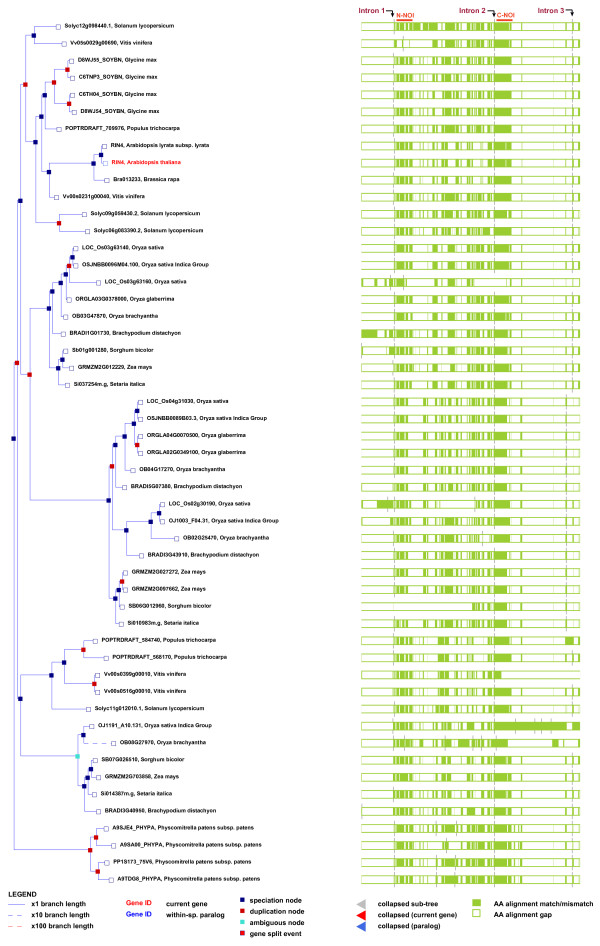Figure 2.
(Left panel) A Phylogenetic tree of 51 NOI containing proteins from monocots, dicots and moss was generated using the Ensembl plant database (http://plants.ensembl.org/). The 51 NOI containing proteins were selected on the basis of their sequence homology to AtRIN4. Red nodes in the phylogenetic tree represent duplication events whereas the blue nodes are speciation events. (Right panel) Multiple alignments of the 51 NOI containing proteins shown on the left were generated using MUSCLE. The light green bars correspond to amino acids within the protein sequence, whereas the white spaces represent alignment gaps. The 3 intron junctions are shown as black lines (labeled) that run perpendicular to the alignment trace. The intron junction preceding the N-NOI is labeled as intron 1 whereas the intron junction preceding the C-NOI is labeled as intron 2. The position of the third intron varies between monocots and dicots. This junction in most monocots and moss is one amino acid removed from the conserved cysteines, whereas in most dicots it immediately precedes the C-terminal cysteine residues. The regions corresponding to the N-NOI and C-NOI are shown by red bars.

